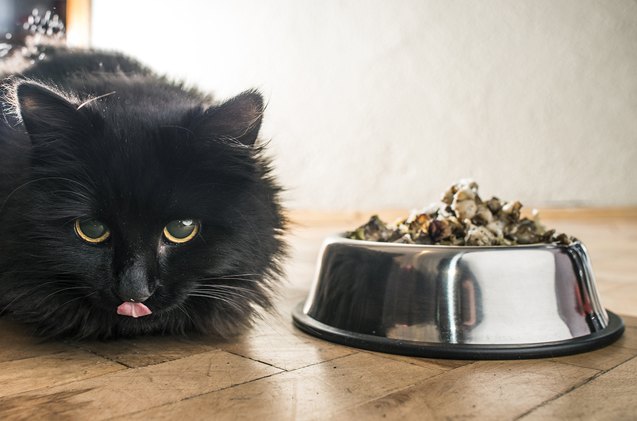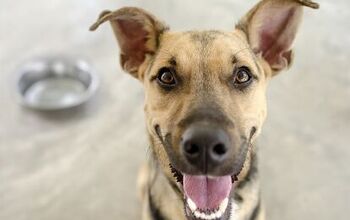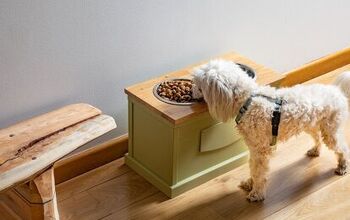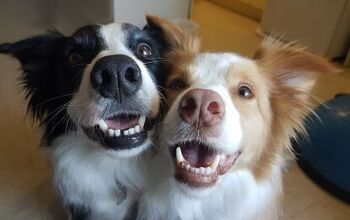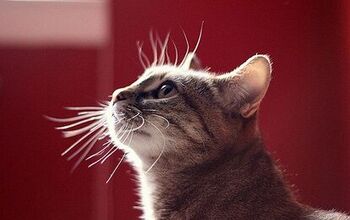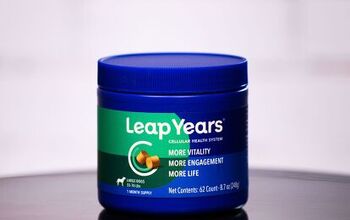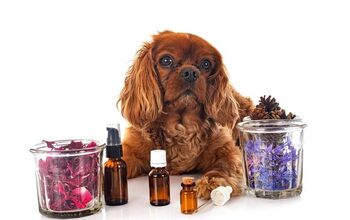If you’ve ever asked yourself “How many times a day should I feed my dog,” you’re not alone. This is a major concern for any pet parent and a question that can only be answered after looking at all the factors involved with his diet. Every dog has different dietary needs, after all!
Every dog needs to eat. That’s a fact. It’s science. You can’t fight it and it would be wrong to try. So as a result, one of your most basic responsibilities as a pet owner is to provide your dog with a nutritionally efficient diet. Like humans, dogs require a balance of nutrients in their diet to ensure optimal health. After all, if you don’t provide for your dog’s basic nutritional needs, his health will suffer and it could very well affect his lifespan. There’s a reason why these are called nutritional NEEDS and not merely suggestions.
This is serious. It’s an extremely important responsibility of any pet parent. In order to ensure the health and wellness of your dog, you should take the time to find out not only what you should be feeding him, but how often as well. Because if you are feeding your dog a large bucket full of nutritionally rich food every day, it won’t exactly be healthy overall. Portion control is as important as knowing the value of what goes into your pup’s dish.
By virtue of the fact that you even clicked on this article, you clearly care about your doggy’s dietary needs. That’s great news. Congratulations. Now, let’s explore some ways to ensure that your dog gets the food and meal schedule that they deserve. By taking a little time to figure this out, you will make a massive impact on your dog’s health that will have a positive impact on every aspect of his little pupper life.
What Should I Be Feeding My Dog?
Dogs require a balance of protein, fats, and carbohydrates in their diet as well as certain vitamins and minerals. When choosing a commercial dog food formula for your pet, you should take the time to look at the package to make sure that it is a healthy source of nutrition. It’s easy to look at the long list of ingredients and feel overwhelmed, but without taking the time to go through it and determine whether or not the food has what your pup needs, you can never be certain that your dog is enjoying a healthy diet.
The first thing that you should look for when evaluating a pet food label is the AAFCO statement of nutritional adequacy. The American Association of Feed Control Officials (AAFCO) is responsible for monitoring and regulating the production of animal feed. So that means that they evaluate the ingredients that go into each product and sometimes perform trials to determine whether the food meets the basic nutritional requirements for the type of pet that it is formulated for. If the dog food label doesn’t have an AAFCO statement of nutritional adequacy, do not buy it.
Sadly, far too many dog foods are available that do not live up to the AAFCO’s high standards. Do not fall for the empty savings and promises that they offer. A few dollars saved on your grocery bill could shave a few years off of your pup’s life. That’s just not right. Your dog deserves better and it’s arguable that AAFCO certification is the bare minimum standard that the food you feed your furry friend should have. You wouldn’t feed your children food that hasn’t met the most basic standards of the FDA and your doggo’s diet deserves at least that level of respect too! It is absolutely disgusting what some disreputable companies are willing to put in their food to save a few dollars and you absolutely do not want to support these companies.
Related: What You Need To Know About Dog Feeding Guidelines
That’s why another thing you should pay attention to when evaluating pet food brands is the ingredients list. The ingredients lists on pet food labels are typically ordered by volume. This means that the ingredients at the top of the list are present in the highest quantities. Look for high-quality sources of protein at the top of the ingredients list. These will be things like chicken, lamb, fish, chicken meal, and so forth. If the first ingredient on the list is some kind of inexpensive filler (like cornmeal or wheat), it is not a quality source of nutrition and should be avoided at all costs. At that point, you may as well be filling your dogs bowl up with a mixture sawdust and ground chicken. Protein is a vital component of your doggy’s diet and should always be the top listed ingredient (especially in wet food). If your pooch isn’t getting enough protein, then that doggo simply won’t be able to live its best life. Full stop.
In addition to protein, the dog food should contain some easily digestible source of carbohydrate like brown rice. Corn and wheat based ingredients are not only lower in nutritional value than brown rice, but they are harder to digest and may trigger food allergies in some dogs. It’s really sad what some dog food companies consider to be appropriate to feed dogs. In some cases, they are outright poisoning our furry friends for the sake of saving money on filler. Maintaining a healthy skepticism about what goes into these products will go a long way to ensuring that you make the right choice for your pet at the grocery store. Always be vigilant about reading that ingredient list though. If a pet food seems too good to be true at first glance, then it probably is.
How Often Should I Feed My Dog?
Once you’ve chosen a dog food formula that works, you should read the feeding recommendations on the package to determine how much to feed your pet. Keep in mind that these recommendations are just that – recommendations. All dogs are different and your personal pup may need more or less food than the amount listed. This depends primarily on his age and activity level of your doggo. There’s no set guidebook available for this. If you want to be certain, you could always consult a vet. However, it might be a bit excessive to visit your vet every single time that you decide to try a new brand of dog food.
Unfortunately, the only way to be sure about the portions that are best suited to your pup is to experiment through trial and error. The best thing you can do is start off feeding your dog the recommended amount for a few weeks. If he gains weight, you might need to reduce the amount by a little bit. If your dog loses weight or doesn’t appear to have as much energy as he should, feed him a little more. It might not feel right to experiment on your dog in this manner, but unfortunately it’s the only way to be sure that you are feeding the pup the right amount. If you get the balance right, your dog will thank you with oh-so much affection. You’ll know once you’ve found the sweet spot. You’ll see it and feel it in your pooch.
Related: How is Commercial Dog Food Regulated?
It’s up to you how many times a day you choose to feed your dog, but you should really only feed him the recommended amount once you determine a schedule (adjust as needed, of course). For example, if you choose to feed your dog twice a day, then you will need to divide his total daily portion in half (perhaps consider giving the pup half in the morning and half in the evening). Now, if you choose to feed your dog three times a day, you’ll have to divide it in thirds (breakfast, lunch and dinner) and so on and so forth. Most dog owners choose to feed their dogs twice a day (again, once in the morning and again in the evening), since that easily revolves around their family’s consistent eating patterns. Your dog is a member of your family after all, so it only makes sense that the pup’s meals fit into your family’s food schedule. Being on the same feeding schedule as your family will also help keep your pooch from begging for scraps at the dinner table as well. So, it’s a win for you as well as the dog.
The key to keeping your dog happy and healthy is to provide him with a balanced diet. As long as you take the time to evaluate your chosen dog food brand for nutritional adequacy and you follow the recommendations for feeding, you’re on the right path. Keep in mind that this isn’t an exact science. Every dog is different and every family is different. So there is no hard and fast feeding rules that will apply to every household. You’ll have to find the right system that works for your family.
Sadly, the fact that you even care about this puts you above most dog parents. So many negligent pet owners will merely buy the cheapest pet food available and feed their animal at whenever seems to be the most convenient time. That’s not right, but fortunately by even reading this article, you are already a step ahead of those miserable pet owners. With a little time and effort, you’ll soon settle into a routine that will please your pet and suit your family. And of course, as with any issue related to your pup’s health, if you have a deeper concerns about your doggy’s diet, feel free to consult with your vet. After all, you have a vet precisely to solve these sorts of problems, right? So don’t be afraid to use them.
Good luck out there. With a little effort, you’ll be surprised how easy it is to settle into the right feeding routine and end up with a happy, healthy, and loving pup!





